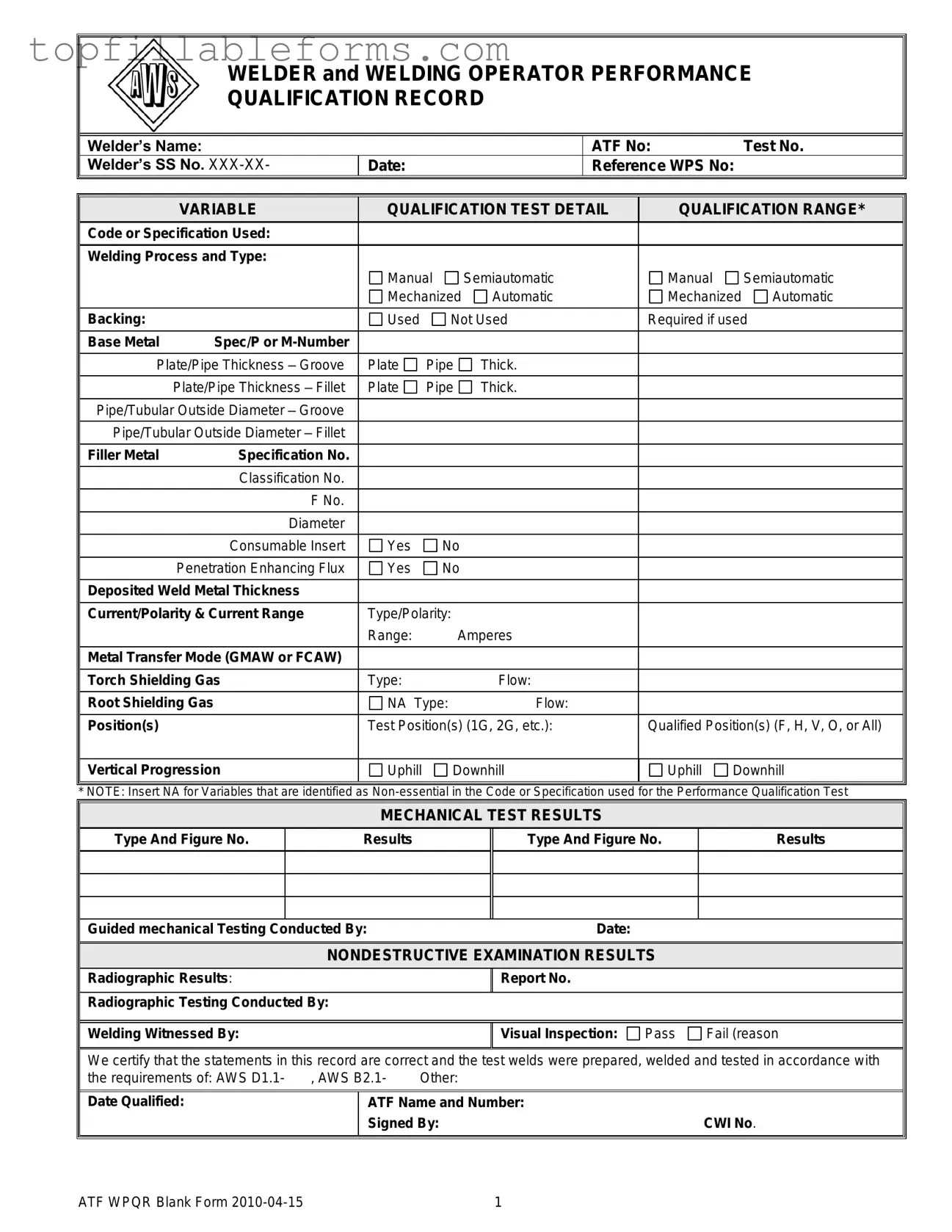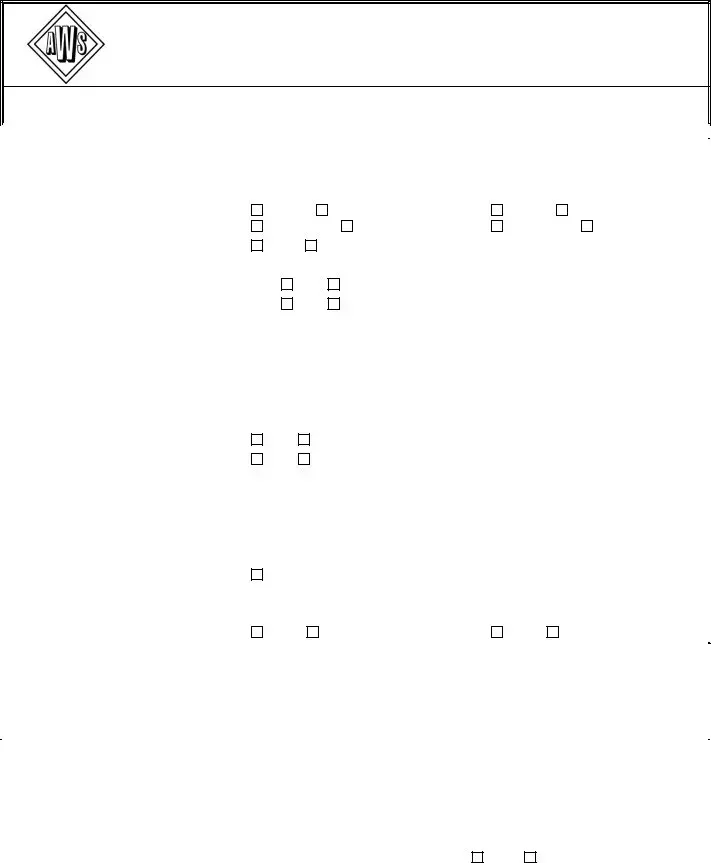Printable Welder Performance Qualification Record Form in PDF
The Welder Performance Qualification Record form serves as a crucial document in the welding industry, capturing essential details about a welder's skills and qualifications. This form not only verifies the welder's identity and the tests they have completed but also outlines the specific parameters of the welding processes they are certified to perform. By maintaining accurate records, employers can ensure that their welders meet industry standards and safety requirements.
Open Welder Performance Qualification Record Editor Here

